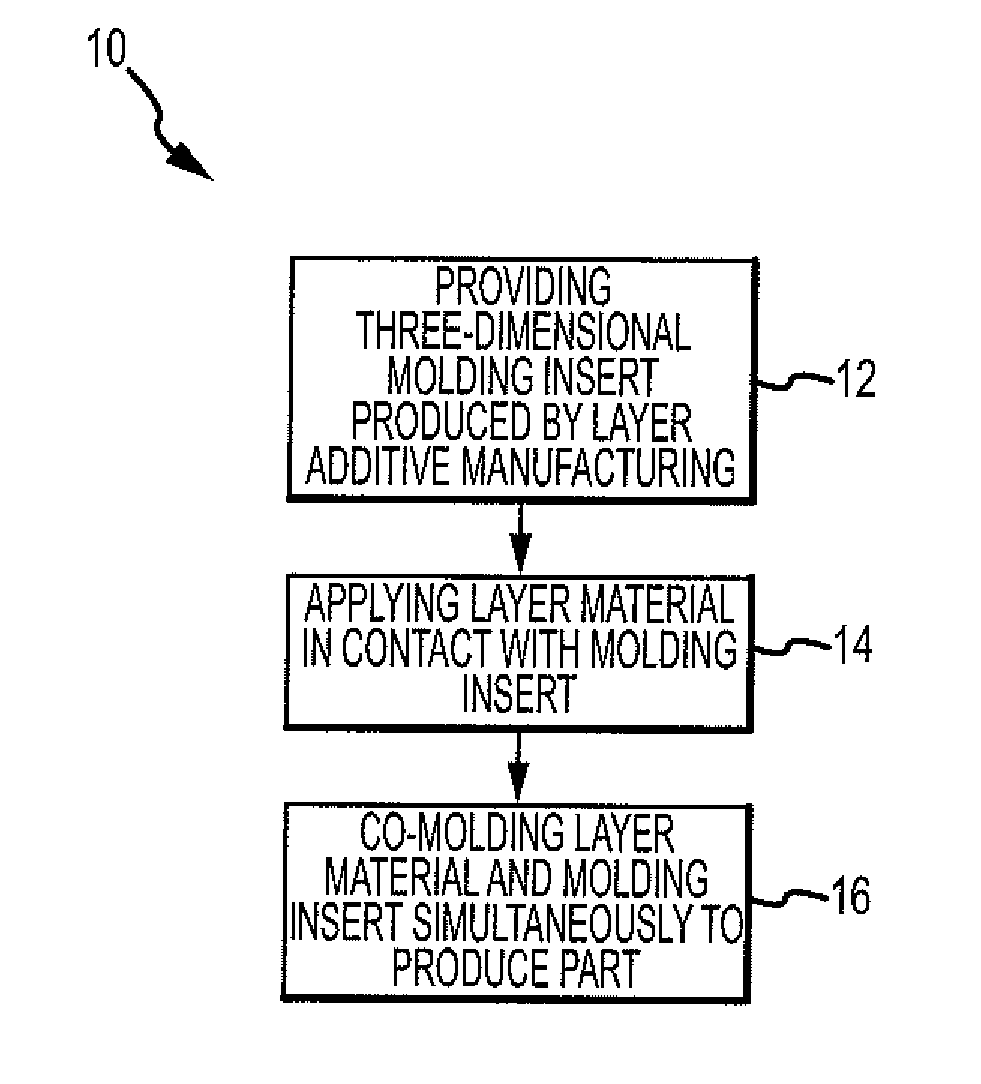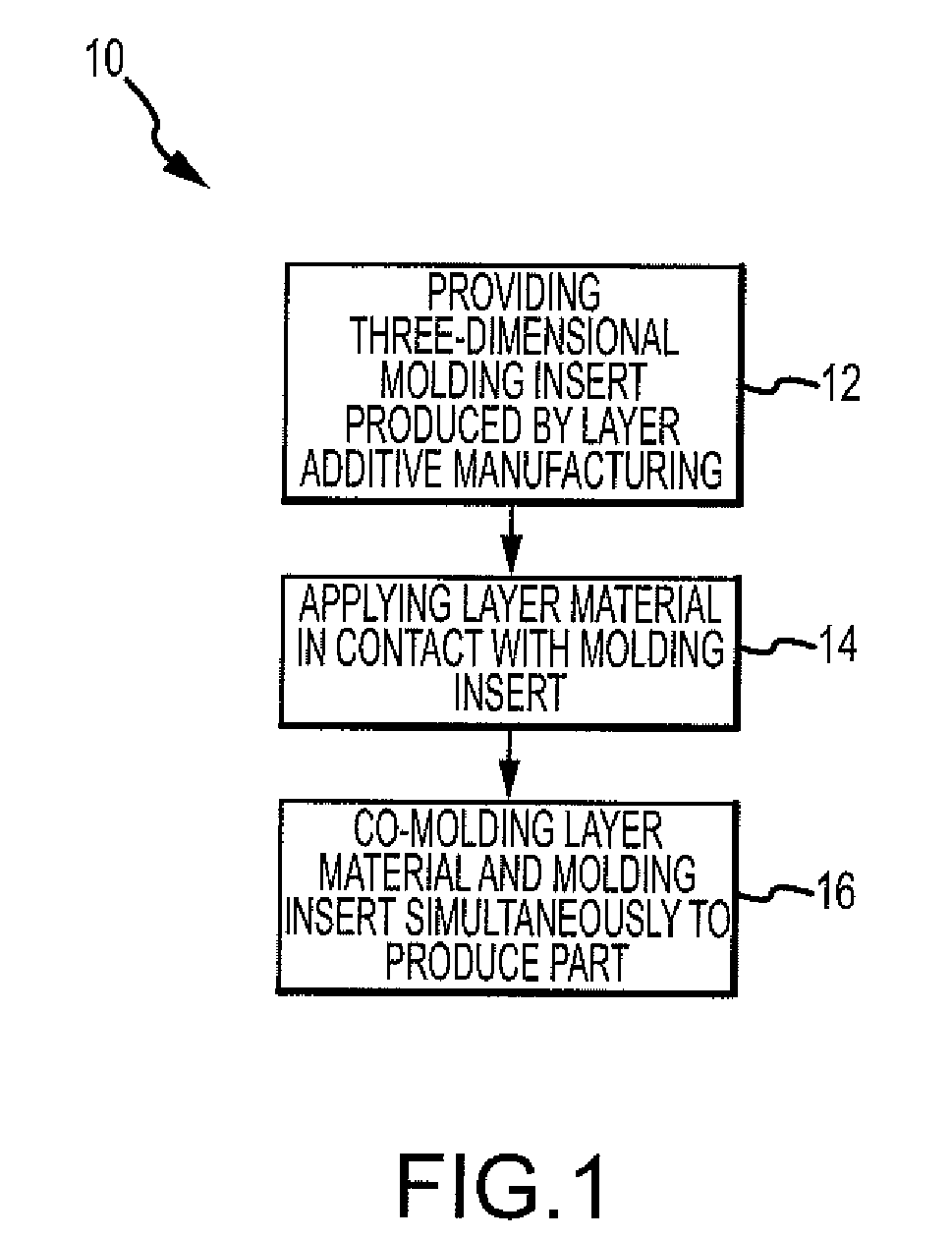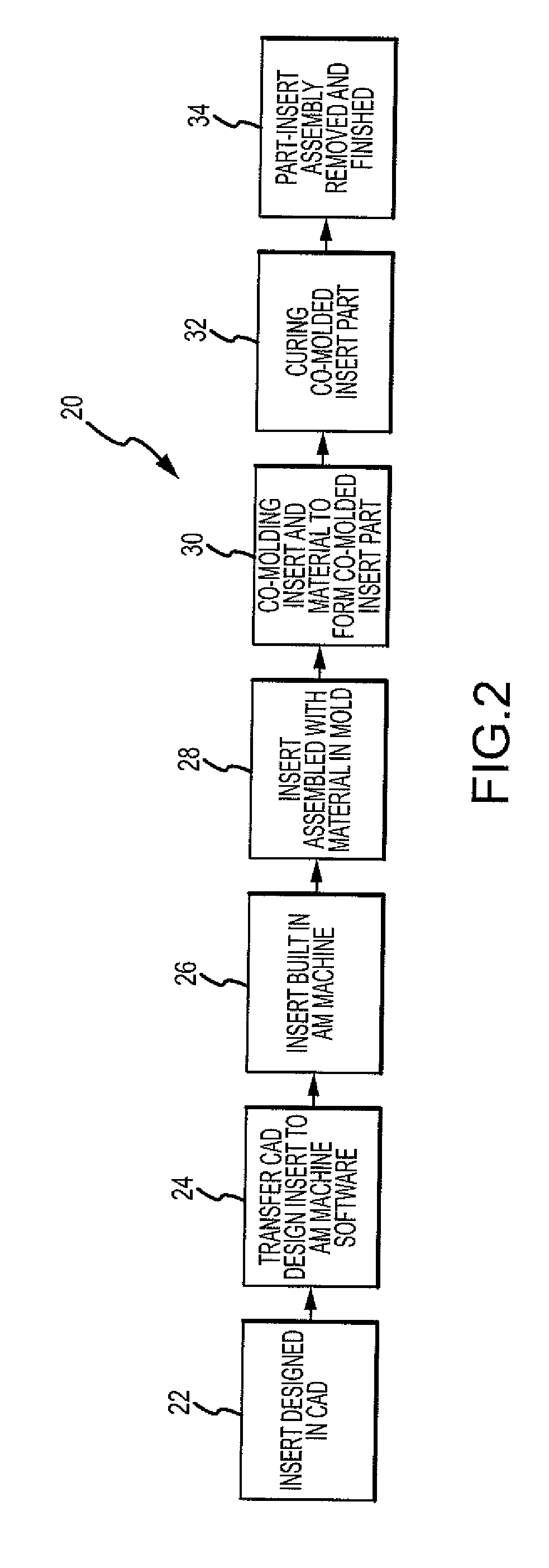Method of manufacturing co-molded inserts
a technology of co-molded inserts and manufacturing methods, which is applied in the direction of electric/magnetic/electromagnetic heating, instruments, chemistry apparatuses and processes, etc., can solve the problems of increasing labor costs, requiring a large number of parts and associated logistics, and requiring significant production lead time, so as to reduce costs, reduce costs, and reduce tooling costs or lead time.
- Summary
- Abstract
- Description
- Claims
- Application Information
AI Technical Summary
Benefits of technology
Problems solved by technology
Method used
Image
Examples
Embodiment Construction
[0020]Disclosed embodiments will now be described more fully hereinafter with reference to the accompanying drawings, in which some, but not all of the disclosed embodiments are shown. Indeed, several different embodiments may be provided and should not be construed as limited to the embodiments set forth herein. Rather, these embodiments are provided so that this disclosure will be thorough and complete and will fully convey the scope of the disclosure to those skilled in the art.
[0021]The method of the disclosed embodiments uses additive manufacturing (AM) technology to make co-molded inserts for use in composite, plastic, and metal part manufacturing or on reinforced or monolithic polymeric parts. The method of the disclosed embodiments may be used for making composite, plastic, and metal parts having co-molded inserts for use in spacecraft, aircraft, military craft, automobiles, watercraft, and other vehicles and craft. Accordingly, one of ordinary skill in the art will recogniz...
PUM
| Property | Measurement | Unit |
|---|---|---|
| Moldable | aaaaa | aaaaa |
| Stiffness | aaaaa | aaaaa |
Abstract
Description
Claims
Application Information
 Login to View More
Login to View More - R&D
- Intellectual Property
- Life Sciences
- Materials
- Tech Scout
- Unparalleled Data Quality
- Higher Quality Content
- 60% Fewer Hallucinations
Browse by: Latest US Patents, China's latest patents, Technical Efficacy Thesaurus, Application Domain, Technology Topic, Popular Technical Reports.
© 2025 PatSnap. All rights reserved.Legal|Privacy policy|Modern Slavery Act Transparency Statement|Sitemap|About US| Contact US: help@patsnap.com



